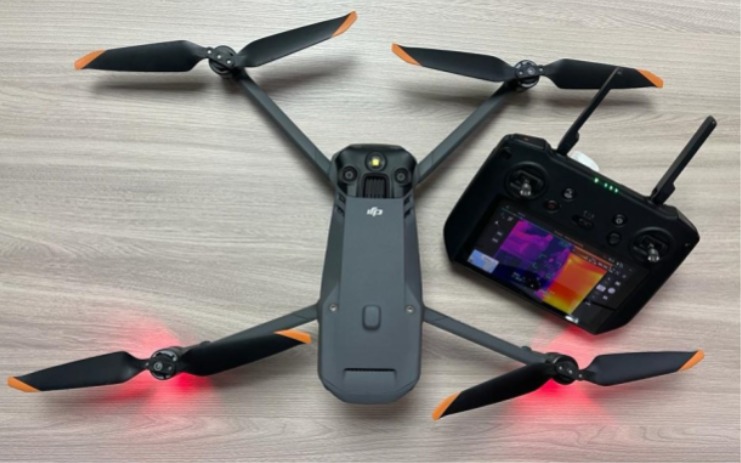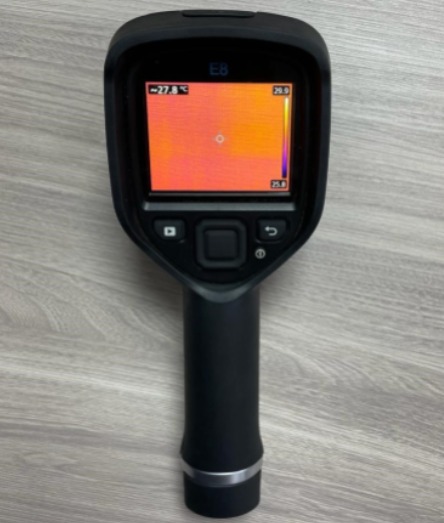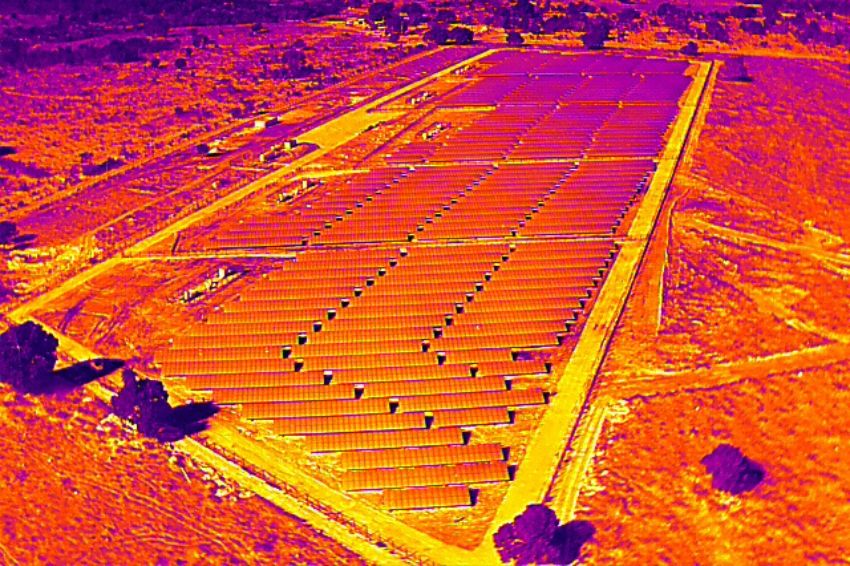This article describes the use of thermography as a tool for monitoring photovoltaic systems and aims to clarify, in a practical way, the test procedures and the main problems encountered when carrying out this test on photovoltaic plants.
The concept of infrared radiation and its relationship with heat
Before describing the practical aspects of thermography applied to photovoltaic systems, it is important to understand the theory behind the application of this important test.
To do this, the concept of infrared radiation is first explained, which is the theoretical basis for the functioning of thermal cameras available on the market.
Infrared radiation are electromagnetic waves that are not visible to human eyes and are directly related to heat. Molecules and atoms that form any matter emit radiation, which is linked to the agitation of these particles and, in turn, is related to heat.
Thus, any matter, as long as it has a temperature above absolute zero, will emit infrared radiation. Simply put, matter emits infrared radiation in the form of heat, however, this radiation is not visible to the human eye. However, technological advances have allowed the development of equipment capable of capturing this radiation and displaying it through thermographic images.
Thus, the infrared camera (thermographic camera) is the technology capable of capturing the infrared radiation emitted by bodies and forming thermal images based on the readings made by its sensors. The intensity of infrared radiation radiating from a specific object allows the camera to identify its temperature.
Thermography in photovoltaic systems
Inspections in photovoltaic plants with an infrared camera – popularly known as thermographic testing, or thermography – are analyzes that aim to detect temperature variations throughout the installed system.
The analysis must be carried out not only on modules, but also on connections, equipment (inverters, transformers) and electrical panels. This procedure is routinely carried out in photovoltaic plants, within the scope of commissioning and also O&M (Operation and Maintenance).
Carrying out thermography tests brings several advantages, as they can identify early failures in a photovoltaic plant, which helps to avoid losses in energy generation and also guarantee the operational safety of the plant.
Depending on the type of failure, which will be exemplified in later topics in this article, the system may be at risk of even suffering a fire, in more critical cases. Therefore, this test is extremely important both during commissioning and during periodic checks of the plant.
The NBR 16274 standard, which deals with testing and commissioning of photovoltaic systems, describes the importance of using a thermal camera to detect abnormal variations in modules, bypass diodes and connections.
She mentions that care must be taken to carry out the test in normal operating mode of the PV system, with a stable sky and minimum solar irradiance of 600 W/m². This will ensure that a minimum current is passed through the system and, thus, temperature differences during the test can be noticed.
The most popular equipment for thermography testing is the thermographic camera, which is basically a camera equipped with infrared radiation sensors. The most traditional cameras on the market usually have the function of capturing both thermal images and common images, such as a cell phone photo.
This function is important, because when producing reports on the tests carried out, comparing the common image with the thermographic image helps in analyzing problems and also in identifying places where temperature deviations are found.
Figure 1 shows a model of a traditional thermal camera used in inspections of photovoltaic plants.

It is very common to carry out thermographic tests using drones in plants with large quantities of modules. Currently, there are drones equipped with infrared radiation cameras, and their application reduces testing time and maintains the quality and efficiency of the tests.
In fact, drone tests have demonstrated great efficiency in identifying thermal problems in plants. Aerial images, in most tests, suffer less interference in readings due to the angles of the measurements taken.
Figure 2 shows one of the drone models used in the Solar Canal commissioning tests.

Main problems identified with thermography
The use of thermographic tests in photovoltaic plants allows the identification of a variety of defects that will be described in this topic. These defects are manifested by hot spots in the photovoltaic array, well known by its English term hotspot.
Below, the main defects identified through the use of thermography are described:
- Diode in the junction box of the modules is defective;
- Defective or disconnected photovoltaic modules;
- Cracked cells or glass (for various reasons);
- Dirt on the modules;
- Moisture penetration into the module cells;
- Faults in electrical connections;
- Cell detachment due to failure in the lamination (manufacturing process).
All anomalies described above must be located as quickly as possible, as they cause a drop in system performance. A single faulty module can limit the generation of the entire string, since the electrical current must be the same in a series circuit. A persistent defect also shortens the module's useful life.
Furthermore, certain types of defects can cause excessive heating in the cells of the photovoltaic array and, in more serious cases, can lead to fire, as extensively reported in the literature.
Tips and precautions when carrying out thermographic tests
When carrying out thermography tests, you must pay attention to some details so that the execution is carried out well and the results are satisfactory. The first point, although obvious, deserves to be highlighted: the test is always carried out with the plant energized and with the current flowing through the system arrangements.
Want to read the full article? Download now 17th edition of Canal Solar Magazine.
The opinions and information expressed are the sole responsibility of the author and do not necessarily represent the official position of Canal Solar.
















4 Responses
Dear sirs,
The article is extremely important. I know the technology and it is an extremely important prior and corrective inspection instrument. Let us remember that a bad contact can be very dangerous in a DC circuit and cause the generation of long-lasting electrical arcs, if the protection system is not equipped with equipment to eliminate them, they can give rise to a large fire and we all know that the sun doesn't turn off. I am passionate about renewable energy, designer and integrator. In our humble opinion; the energies of the very near future: Wind, biofuels, wave and tidal, fuel cell, green hydrogen and solar, which is now the second in installed capacity in Brazil (in operation and contracted). Engineer and teacher. Whatsapp and cell phone: (21)997716277
Dear sirs,
The article is extremely important. I know the technology and it is an extremely important prior and corrective inspection tool. Let us remember that a bad contact can be very dangerous in a DC circuit and cause the generation of long-lasting electrical arcs, if the protection system is not equipped with equipment to eliminate them, they can give rise to a large fire and we all know that the sun doesn't turn off. I am passionate about renewable energy, designer and integrator. In our humble opinion; the energies of the very near future: Wind, biofuels, wave and tidal, fuel cell, green hydrogen and solar, which is now the second in installed capacity in Brazil (in operation and contracted).
Excellent post from Geraldo Silveira, I would like to know if he can recommend any Drone courses in this regard. I work in the area of electrical energy and I already do work with thermovision.. in Substations and HYDRAULIC PLANT. I'M WAITING.
thank you for the information.
I am preparing to carry out thermographic inspection on photovoltaic systems, among other inspections.